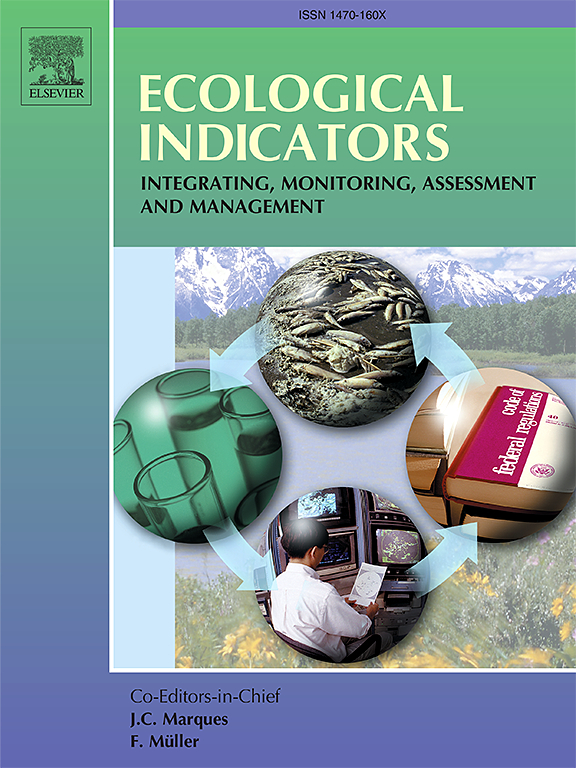Spatiotemporal evolution of ecological vulnerability on the Loess Plateau
IF 7
2区 环境科学与生态学
Q1 ENVIRONMENTAL SCIENCES
引用次数: 0
Abstract
The Loess Plateau, located in the northwest of China, is one of the country’s most ecologically fragile regions and a significant source of sediment transported by the Yellow River. Given its ecological importance, a comprehensive assessment of its vulnerability is essential for informing sustainable development initiatives. This study evaluates the ecological vulnerability of the Loess Plateau and aims to provide a theoretical basis for promoting long-term ecological restoration in the region. The “Sensitivity-Resilience-Pressure” (SRP) model was employed to select indicators for assessing ecological vulnerability, while an improved fuzzy analytic hierarchy process (IFAHP) was used to determine the relative weights of these indicators. Using GIS-based overlay analysis, an ecological vulnerability index was calculated, enabling the assessment of spatiotemporal changes and identification of key influencing factors. The results indicate a decreasing trend in ecological vulnerability over the past three decades, with vulnerability levels showing a distinct northwest-to-southeast gradient. Significant spatial variation was observed, with the highest levels of ecological vulnerability concentrated in Inner Mongolia, northern Shaanxi, Ningxia Hui, and Gansu provinces. Vegetation coverage, net primary productivity, and precipitation emerged as the primary drivers of these spatiotemporal changes, with notable interactions between these factors. The findings offer valuable insights for guiding ecological restoration efforts and supporting sustainable management strategies for the Loess Plateau.
求助全文
约1分钟内获得全文
求助全文
来源期刊

Ecological Indicators
环境科学-环境科学
CiteScore
11.80
自引率
8.70%
发文量
1163
审稿时长
78 days
期刊介绍:
The ultimate aim of Ecological Indicators is to integrate the monitoring and assessment of ecological and environmental indicators with management practices. The journal provides a forum for the discussion of the applied scientific development and review of traditional indicator approaches as well as for theoretical, modelling and quantitative applications such as index development. Research into the following areas will be published.
• All aspects of ecological and environmental indicators and indices.
• New indicators, and new approaches and methods for indicator development, testing and use.
• Development and modelling of indices, e.g. application of indicator suites across multiple scales and resources.
• Analysis and research of resource, system- and scale-specific indicators.
• Methods for integration of social and other valuation metrics for the production of scientifically rigorous and politically-relevant assessments using indicator-based monitoring and assessment programs.
• How research indicators can be transformed into direct application for management purposes.
• Broader assessment objectives and methods, e.g. biodiversity, biological integrity, and sustainability, through the use of indicators.
• Resource-specific indicators such as landscape, agroecosystems, forests, wetlands, etc.
 求助内容:
求助内容: 应助结果提醒方式:
应助结果提醒方式:


